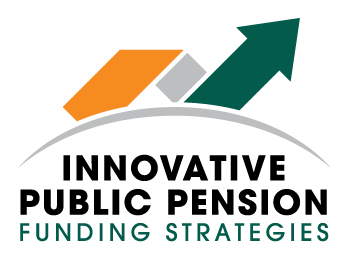The National Institute on Retirement Security and the Conference of Consulting Actuaries launched a new public pension funding competition and award: Innovative Public Pension Funding Strategies.
An esteemed panel of judges selected three funding strategy submissions for the award and $5,000.
The winning submissions:
- The Cost of Stability: A Case Study by Robert (Andy) Blough, FSA, EA, MAAA, FCA and Seth Stock, MBA. The funding policy is a simplified version of an existing strategy used at the Indiana Public Retirement System, and it prioritizes benefit security and rate stability. While it was designed for multiple-employer cost-sharing pension plans, it works equally well for a single-employer plan. Read the funding plan here.
- Risk-Based Funding Policy by Bill Winningham, Michelle Boyles, Aaron Shapiro, and David Kent. This Risk Based Funding Policy uses a standard normal cost, plus layered amortization approach. However, the amortizations are based on the funding policy liability, which equals the accrued liability adjusted by a risk load factor. It also utilizes a Contribution Surplus Account to stabilize costs over time. Read the funding plan here.
- Reserve Fund Stabilized Contribution Policy—A Model Public Pension Funding Policy by David Draine. The Reserve Policy is a potential funding policy for state and local sponsors of pension benefits that builds on standard actuarial funding approaches to achieve greater predictability in contribution rates. The policy has similarities to the funding policy used in Tennessee’s hybrid pension plan design as well as the pre-funding trusts and side accounts available to employers participating in CalPERS and Oregon PERS, respectively. It also features a transition strategy for existing plans or tiers. Read the funding plan here.
Why the Award?
The purpose of the competition was to spotlight innovative ideas on state and local pension funding policies that can reduce cost volatility, promote intergenerational equity, and assure that pension plans remain on a strong fiscal path over time.
While the vast majority of pension plans are well-funded, costs can vary over time due to a number of factors. Currently, public pension plans are reporting strong investment returns, but stock market volatility, demographic changes and other factors can affect future costs. For the competition, entrants were given a hypothetical pension scenario and asked to design a funding policy. The selection of winners was at the sole discretion of NIRS and CCA.
This competition encouraged and shared innovative thinking around the funding of state and local pension plans. The vast majority of pension plans are well-funded, but costs can vary over time due to a number of factors. Public pension plans are currently reporting excellent investment returns from the past year, but stock market volatility, demographic changes, and other factors can affect future costs.
Broadly, the competition seeks innovative ideas on funding policies that can reduce cost volatility, promote intergenerational equity, and assure that plans remain on a strong fiscal path over time in a manner that is consistent with the CCA white paper, Actuarial Funding Policies and Practices for Public Pension Plans.
For this competition, entrants were given a hypothetical pension scenario and asked to design a funding policy that will address the goals detailed above over the long-term.
JUDGES
The following panel of judges with deep pension and actuarial expertise reviewed the submissions and selected the winner(s).
- Ellen Kleinstuber, Principal and Chief Actuary, Bolton; 2021/22 CCA President
- Patricia Bishop, Director, Virginia Retirement System
- Brent Banister, Chief Actuary, Cavanaugh Macdonald
- Jim Holland, Chief Research Actuary, Cheiron
- Judy Kermans, President and CEO, GRS
- Deborah Simonds, Board Chair, Teachers Retirement System of Georgia
- Jay Stoffel, Executive Director, TRA of Minnesota
- Todd Tauzer, National Public Sector Retirement Practice Leader, Segal
- Daniel Wade, Principal, Consulting Actuary, Milliman
- Aaron Weindling, former Senior Director and North American Modeling and AnalyticsLeader, Willis Towers Watson





